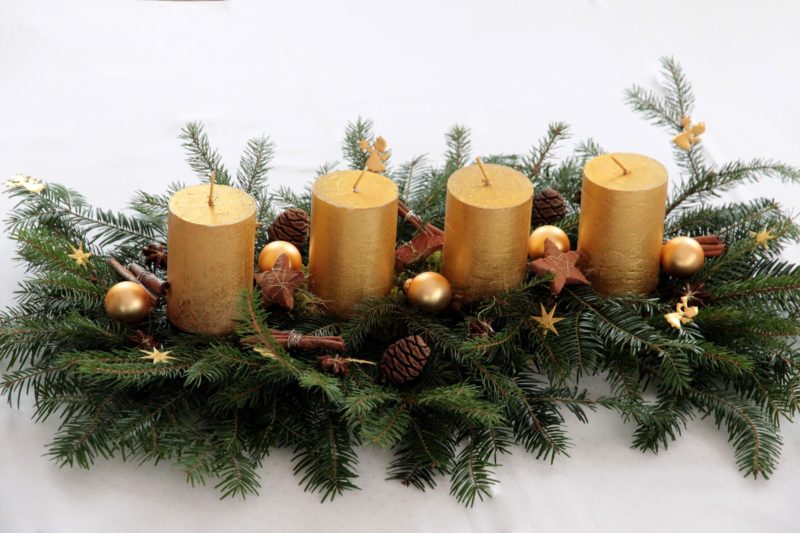Homemade candles are one of the first things beginners make – and an important part of many experienced makers’ repertoires. However, there are several broad categories of candle making, each with its own techniques for different results.
To begin to understand the process, it is helpful to recognize that homemade candles can be classified into three broad groups: molded candles, dipped tapers, and rolled candles. Most people who have experimented with candle making have made one or more types of molded candles, but dipping or rolling requires slightly different processes.

Types of Candles for Beginners
Molded Candles
The simplest method for producing a candle is by using a mold designed for the purpose. Using homemade molds can be problematic because wax shrinks as it cools, so even if you pour the wax into containers that are perfectly sized for candles, the wax may contract as it cools and leave gaps around the candle. Although molds for candles can be purchased quite cheaply at craft shops or online, they are not generally reusable, so you will probably need to purchase several molds in order to make a large number of candles.
Dipped Tapers
Dipping homemade candles is a technique that produces long, cylindrical candles. These are popular for use in candlesticks or to decorate a Christmas tree. They also require more skill than other forms of candle making because the wax must be heated carefully so it does not melt the previous layer of wax but can still flow easily enough to coat the wick smoothly.
Rolled Candles
In contrast to dipped tapers, rolledhomemade candles are composed of sheets of wax wrapped around a solid core. Although these can produce intricate designs by rolling different colors together, they cannot be used in most standard candle holders without damaging them, and they require a lot more work once you have melted your wax perfectly.
Our preference for beginners is molded or dipped candles. The difference between them for a beginner is the difference in the equipment required. When you are making molded candle, all you need to do is melt your wax and pour it into a mold.
However, using molds requires that you purchase several molds, which may not be reusable after each batch of candles. Dipping candles present more of a challenge because you must be able to control the temperature of your wax carefully, but all you need is a container – any container – with measuring units on it so that you know how much wax to heat.
Types of Homemade Molds
Fortunately, there is an easy way around this problem: if you can find a container that is approximately the right size and shape for your intended candle – such as a tin can with both ends removed, or a juice jug – then you can pour the wax into that container and let it set.
This method requires that you preheat your container (by filling it with boiling water), remove it from the heat source after about a minute, and quickly pour the wax into it. It is a good idea to use a commercial candle pouring pitcher. This is because these have spouts that let you pour cleanly without spilling, but they are also easier to damage. So, for your first couple of homemade candles, it may be better to go straight from the can as long as the container has been preheated.
Preheating Your Molds or Containers
The most dangerous part of making homemade candles is probably heating the wax. If you heat your containers too vigorously, they may crack. If you do not heat them enough, then there will likely be gaps around your wicks and your homemade candles won’t burn properly and could even explode under some circumstances.
There’s no need to worry unduly about this. Wax is non-toxic and fairly easy to clean up. However, it is a good idea to preheat your molds or containers by filling them with boiling water for at least a minute before you add the wax.
When Dipping Candles
In order to make dipped candles, all you need is an appropriate mold, some type of clip for holding the wick in place while the candle sets, and a source of heat so that you can melt your wax.
The most popular kind of dipping container is a simple double boiler made from a small saucepan filled with water and a large metal bowl placed on top of it. The wick should be secured with a clothespin or wire loop attached firmly to the bottom of your container.
The First Dip
After you have created a mold, filled it with wax, and secured the wick, move the container close to or place it over a heat source until the wax melts. Then quickly rotate your candle about an inch above the surface of the liquid wax in a circular motion.
The trick is to keep moving so that you do not produce pooling around the wick. This will prevent it from burning properly. It also does not letting this coating cool too much before dipping again, because you’ll need to add several layers to create a candle strong enough to burn for more than half an hour or so.
The Second Dip
Dip your homemade candles again every 4-6 seconds if possible without causing pooling. You will need at least three layers of wax to create a candle that is sturdy enough to burn for about an hour. Four or five layers should be fine for a candle that can last two hours before burning out.
Conclusion
It may not seem like much fun, but you’ll get the hang of it in no time and will likely enjoy dipping homemade candles more because they are less labor-intensive once you have created your mold. To know more about candlemaking and homemade candles, read our other articles on our site.
